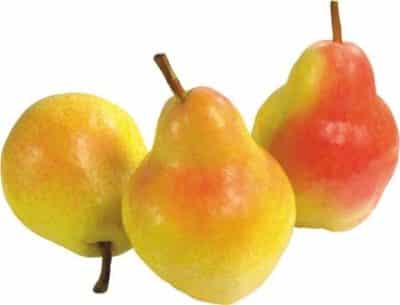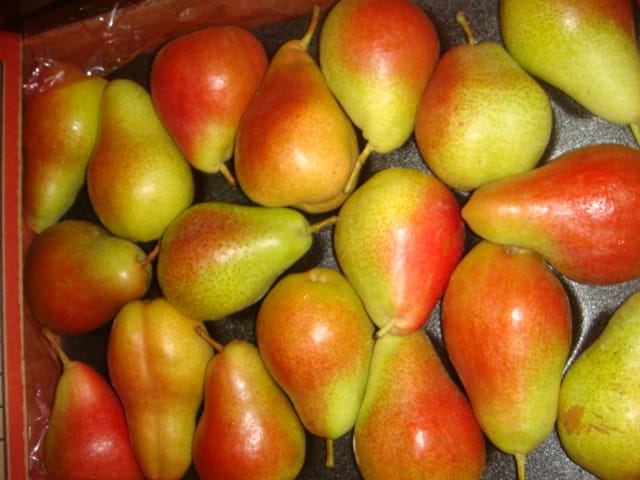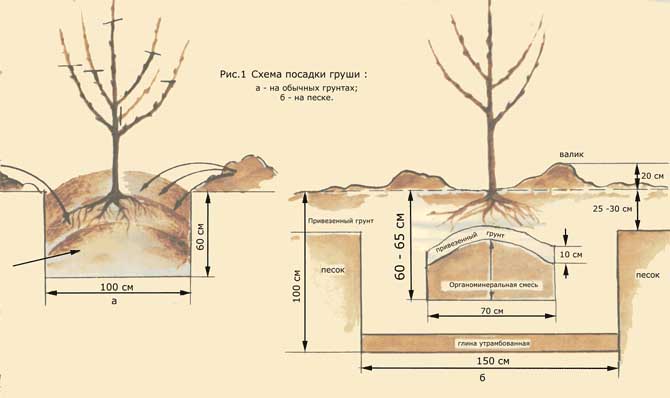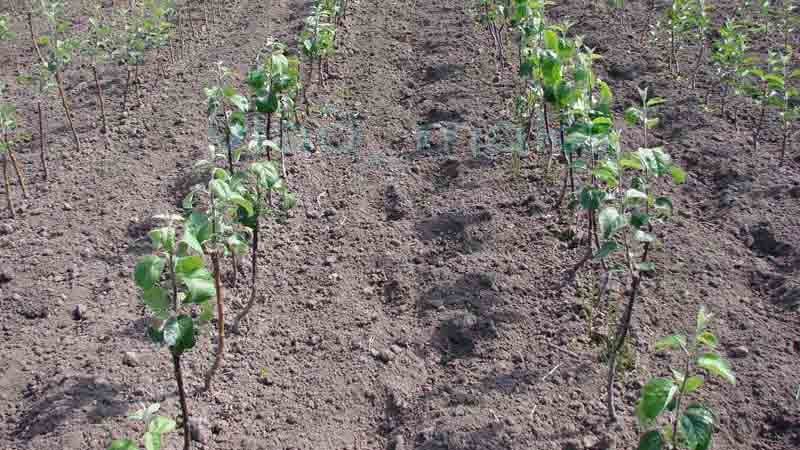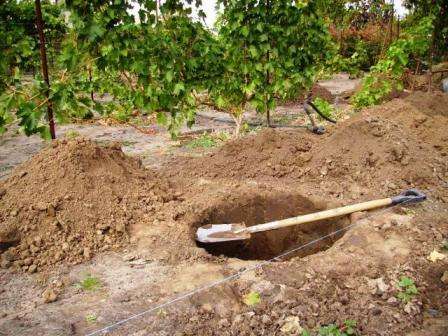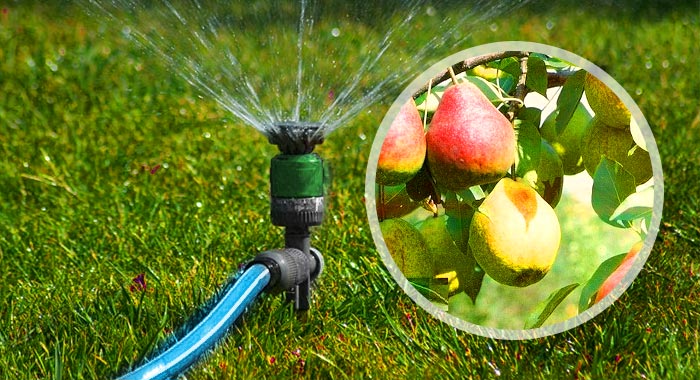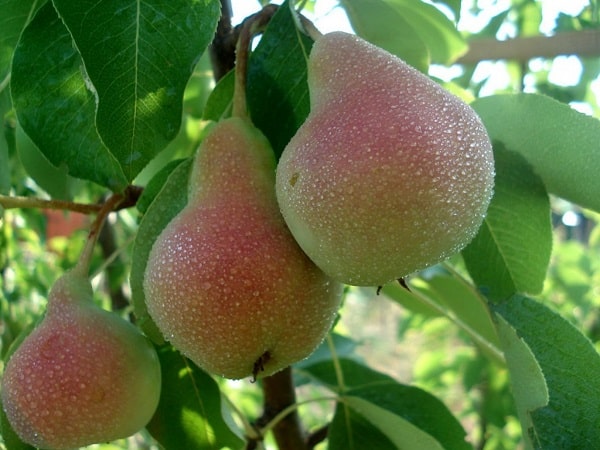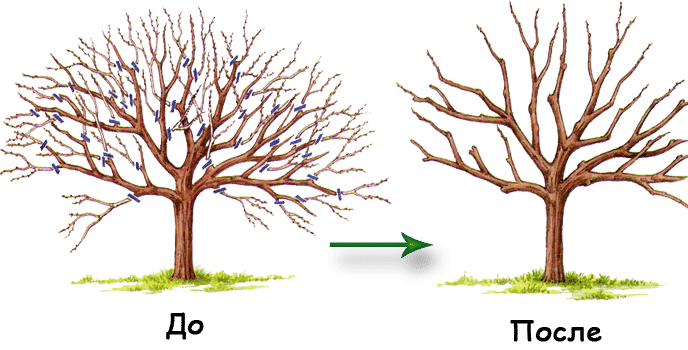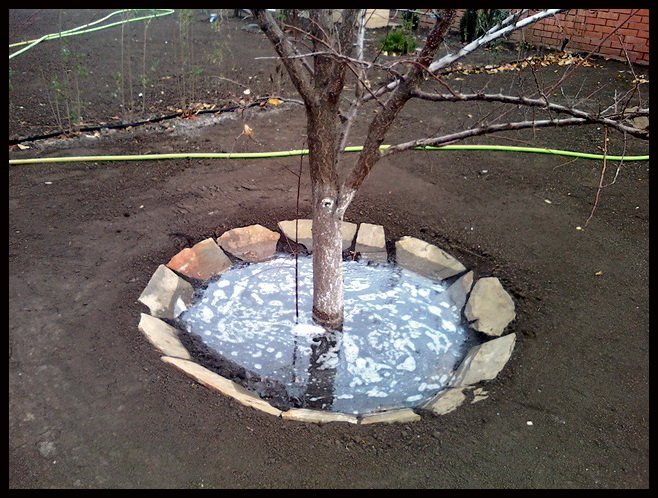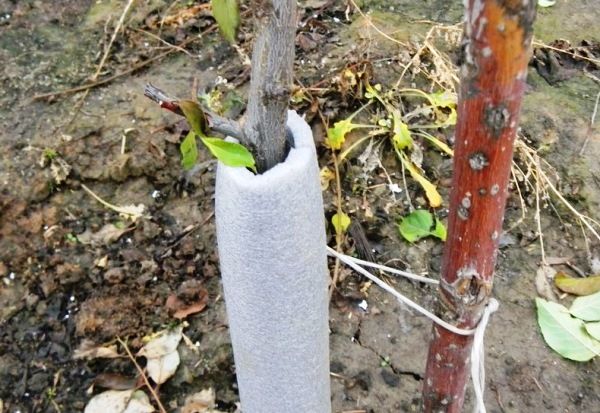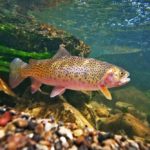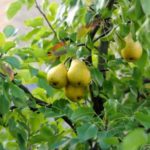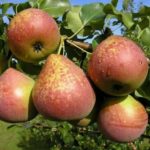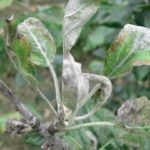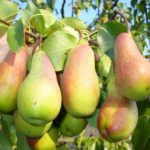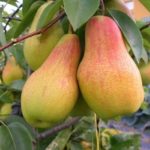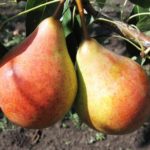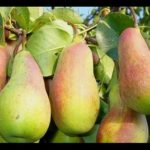When selecting garden trees, gardeners take into account many factors, among them: the subtleties of cultivation, immunity to various types of plant diseases, and the taste parameters of the fruit. The main decoration of the garden is the pear. Selectors have developed many different types of aromatic crops, among which it is worth noting the Trout pear variety.
- Description and characteristics of trout pear
- Pros and cons of the variety
- Basic landing rules
- Landing dates
- How to choose seedlings?
- How to choose a place in the garden?
- Preparing the planting hole
- How to plant a seedling correctly?
- Plant care
- Mulching
- Crown formation
- Watering and fertilizing the soil
- Preparing for winter
- Diseases and pests
- Harvesting and storage
Description and characteristics of trout pear
The unpretentious trout pear is a compact tree for a small area. The height of the most developed specimens does not exceed 6 m. The trunk is of an intense brown tone. The distinctive quality of the Trout variety is its neat leaves with gloss and light yellow veins.
The abundant flowering of the prolific pear begins with the beginning of the thaw in April. The compact species is not a self-fertile crop. The first significant harvest can be obtained 3 years after direct planting in open ground.
Due to the pink-yellow color of the fruits with red specks, the pear variety was named Trout.
The tree produces fruit with a total weight of 130-150 g with a beautiful smooth skin, aromatic white pulp and a slight cinnamon flavor.
Pros and cons of the variety
Among the positive parameters, it is worth noting the following features of the compact pear:
- Abundant harvest.
- Tolerates dry periods and severe cold.
- Large fruits.
- Unpretentiousness to soil composition.
Among the shortcomings, gardeners highlight the following qualities:
- Storage duration is 2 weeks if conditions are carefully observed.
- Susceptibility to gray rot.
- Average winter hardiness and the need to cover the fruits.
- Shedding of ripe fruits preserved on the branches.
Despite the existing shortcomings, many gardeners prefer this unassuming variety and cultivate it on their site.
Basic landing rules
Before planting pears directly, they prepare the soil in the fall, dig it up using organic compounds, and dig a hole in the fall. The parameters of the recess are a depth of 1 meter and a diameter of 80 cm. Moreover, all this is done after the fall of the autumn leaves, before the onset of the first frost.
Young animals are planted by performing the following steps:
- The fertile half of the soil is thoroughly mixed with wood ash collected in advance, and the roots of the seedling are placed in the composition.
- The bottom of the pit is covered with high-quality drainage, and a wooden peg is driven into the side of the center of the pit.
- Lower the pear sample into the hole, carefully straightening the roots.
- After filling 2/3 of the recess, pour out a bucket of settled water.
- After the moisture has been absorbed, the remaining mixed soil is sprinkled onto the hole.
Important! When filling the soil, it is necessary to monitor the condition of the root collar. After the earthen cushion has settled, it should be placed on the surface; it is important to prevent it from completely falling asleep.
In vegetable gardens with a high location of internal groundwater, a dense drainage layer of about 40 cm is created.
Landing dates
It is necessary to plant unpretentious pear seedlings after the winter frosts have subsided, when the soil is sufficiently warmed up. In many regions this time falls in April. You can begin planting the Trout pear variety only after the weather conditions have been completely established.
How to choose seedlings?
The yield indicators and decorative qualities of the variety directly depend on the selected planting material.
It is worth paying attention to the following points:
- The optimal age for the selected young animals should be 1-2 years.
- Carefully inspect the tree for defects.
- Assess the condition of the branches; with a little effort they should not sag or break.
- They look closely at the state of the developed root system of a strong pear and check for the presence of small pests and damage.
How to choose a place in the garden?
Pear thrives in a lighted space and prefers warmth. When selecting a place for planting, take into account that the site must be protected from wind blowing.
The tree must be planted in such a way that the branches do not intertwine with other crowns. Rowan is a poor neighbor tree for the unassuming Trout pear; this will complicate its development, since the crop is very susceptible to various pests. Trees develop well in salty, clayey soil compositions.
Preparing the planting hole
Before placing the seedling, the planting hole is carefully prepared. During the autumn digging period, high-quality organic matter is added to the soil composition. A kilogram of ash or high-quality manure applied in the autumn will give results in the next season. At the same time, it is important to remember that such effective compositions cannot be applied frequently; a break of several years must be observed between them.
How to plant a seedling correctly?
Part of the excavated soil from the hole is mixed with ash in equal proportions, the composition is moistened, then the roots are dipped into the thick mixture. During planting, the young seedling is attached to a support driven into the ground. A sanitary composition must be added to the bottom of the soil; when placing the seedling in the soil, make sure that the neck is always at the top.
Plant care
To get a stable harvest, you must follow the rules for caring for young animals. Not only the appearance of the crop, but also its susceptibility to common diseases of fruit trees depends on these actions. Gardeners note that anyone can care for the Trout pear, because it is unpretentious.
Young seedlings are watered only with room water. A planted tree requires high-quality moisture every week. With the onset of heat, gardeners introduce sprinkling for young pear trees. For this purpose, the soil around the young animals is well moistened so that the life-giving moisture is retained for a long time.
Mulching
To maintain the required level of moisture in the soil around the compact tree, the tree trunk circle is mulched. This method also helps minimize weeds around the tree. Gardeners use sawdust, moss, straw or mown grass or rotted pine needles as raw materials for mulch.
Crown formation
It will take 6 years for a young pear to acquire a neat shape. During this time, the young seedling will form 5 skeletal branches. The gradual formation of the crown is as follows:
- At the beginning of hot July, 3 mature shoots are isolated, placed with a gap of 15-20 cm, from these branches the lower tier is formed.
- When pruning the Trout variety pear is necessary, the central conductor must be left 20 cm above the rest of the shoots.
- The next stage is another sanitary pruning - all weak branches and undeveloped shoots inside the crown are removed.
- The full formation of the pear crown begins in the 3rd year of intensive development of the pear. Leave 3-4 strong branches growing evenly from the trunk.
- In the fourth and fifth years of intensive development, strong lateral branches growing upward are removed from the base of the skeleton.
With clearly formed skeletal branches and the absence of large parallel processes, it can be argued that the crown of the unassuming Trout variety is of the correct shape.
Watering and fertilizing the soil
During the hot season, experienced gardeners recommend regular watering of young pear trees with warm, settled water. In order for the soil to be well saturated with moisture, it is necessary to thoroughly saturate the soil near the trunk, pouring up to 3 buckets under the tree.
Starting from the second year of development, reduce the intensity of watering to 3 times per month.
High-quality fertilizers are applied starting from the next season after planting young animals in open ground. In the spring, high-quality urea is used; at the moment of setting small fruits, the pear is fed with nitroammophos. In the fall, high-quality superphosphate and effective potassium chloride are added to the soil; it also does not hurt to add ash to the soil during seasonal digging.
Preparing for winter
The most critical period of work in the cool autumn is the insulation of the unpretentious Trout pear variety so that it can successfully withstand all the hardships of a harsh winter. To cover the tree for the winter, they make a “fur coat” for the trunk. To do this, strong felt and dried straw are carefully placed along the contour of the trunk, securely secured with durable burlap.
In certain regions with a cold climate and little snowy winters, you can wrap the trunk with high-quality roofing felt. To protect the crop from uninvited guests, nimble rodents and forest hares, the trunks are additionally wrapped with durable metal mesh.
Diseases and pests
The Trout variety is susceptible to “fruit rot”, which spreads from excess moisture. In this case, the fruits become covered with intense brown spots. To avoid this, preventive spraying is carried out with the effective “Fitosporin”.
Another pear scourge is widespread scab, which appears in the form of spots and black spots; as a result of this lesion, inflorescences and leaves begin to fall off.
To overcome the disease, the affected shoots are removed and the tree is sprayed with Bordeaux mixture before the buds open. To prevent young pear shoots from being attacked by aphids, the trunk is sprayed with a similar composition.
Harvesting and storage
Fruit maturity occurs at the end of October.When ripe, pears take on a yellowish tint with beautiful red flecks. In a cool room, the unripe harvest of the variety can be stored for a whole month. At optimal room temperature, the fruits retain their original appearance for 2 weeks. If a gardener wants to stock up on crops for the winter, he removes Trout pears in an unripe form. If storage conditions and optimal humidity levels are observed correctly, there is a chance to preserve fruit for up to six months.

